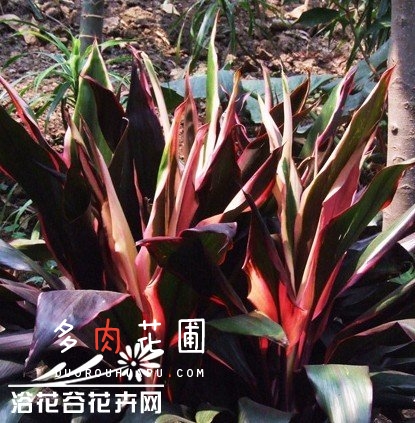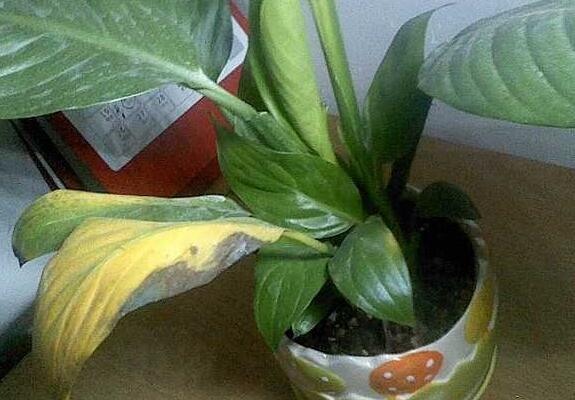Propagation method of tricolor plantain
The three-color plantain is known as the tricolor thousand-year-old, tequila evergreen shrubs, like warm, humid and semi-shady environment, afraid of strong light, suitable temperature for growth of 20-25 degrees Celsius, not cold-resistant, afraid of stagnant water. It is appropriate to loam the slightly acidic sandy loam with good fertility and good drainage.
Three-color plantain is commonly used for cutting propagation, which should be carried out in late spring and early summer. Cut three stem nodes from the mature top tip, remove the lower leaves (cut the □ section smoothly), insert them into plain sand or vermiculite, cover with plastic film cover for heat preservation and moisturization, and keep the substrate moist after planting in the shade. It can take root and sprout after one month at 2530 degrees Celsius. From May to June, it can be rooted in a wide □ bottle after about 3 weeks.

5 parts of brown peat soil, 5 parts of garden soil and 5 parts of river sand should be selected for pot cultivation. The growing season should often keep the basin soil moist, adequate watering in summer, and often spray water on the leaf surface, which can keep the leaf color bright and shiny. In order to cultivate tricolor plantain, it should be noted that only by maintaining high air humidity can the leaves appear moist and gorgeous, and if the air is too dry, the leaf tip will easily turn brown, and even cause the leaves to fall off. In the peak growing season, compound chemical fertilizer is generally applied every half a month, and do not apply too much nitrogen fertilizer, otherwise the color patterns on the leaves will disappear. Indoor culture can be placed in a place with bright light to prevent direct light in summer, otherwise the leaves are easy to burn. The tricolor plantain is not cold-resistant, and the room temperature should be kept above 10 ℃ over the winter. at this time, watering should be controlled to keep the basin soil slightly dry. In order to make the plant shape short and strong, when the plant grows to 50-60 cm high, it needs to be topped to promote the ramet and make the plant shape full. The culture method of tricolor plantain is an evergreen shrub with a single stem and a rod-shaped stem, which is easy to be confused because it is similar to the dragon blood tree, also known as the tricolor dragon blood tree. The leaves are arranged in a loose lotus sitting shape, and with the passage of time, the lower leaves gradually wither and fall off, leaving a timely bare stem. Leaves narrow and long arched, without petiole. The leaves are green at first, and gradually produce a variety of color patterns, tricolor plantain, leaves with green, yellow and red stripes. Growth habits: should be semi-overcast, avoid direct light, and pay attention to avoid the wind. Need higher air humidity (relative humidity 50% Mur60%), dry and strong ventilation environment is very easy to make the leaf tip brown so that the leaf is not resistant to cold, the overwintering temperature is not lower than 10-13 ℃ propagation: sowing, cutting, cutting can be the most convenient. The stem tip of 10-20 cm can be cut in spring and early summer to propagate. Cuttings were placed in moist culture soil mixed with peat, coarse sand and live perlite, covered with plastic bags, placed in a warm room with wide brightness diffusion, and rooting 4-6 weeks later. Move to a basin with a diameter of 10-15 after 4-5 months. Sometimes because the lower stem of Zhu banana is ugly, it can be cut off and implanted in the culture soil by cutting the old stem. The stem has no leaves, but there must be at least one growth bud, 5 cm.
- Prev

Plain sailing leaves yellowing how to do, pay attention to 7: 00 yellowing worry-free / cut off yellow leaves
Plain sailing, not only long and beautiful, the most important thing is the meaning of beautiful, so deeply loved by the majority of flower friends. However, in the breeding process, due to improper maintenance or long-term care, smooth sailing will get sick, followed by yellowing leaves, then smooth sailing leaves yellowing how to do? Actually, it's very simple.
- Next

How to raise computer baby
Computer baby plants are actually common viewing leaves potted Douban green, alias there are what such as pepper grass, jade pepper grass, green leaves Jasper, etc., merchants in order to sell flowers, so find a radiation-proof gimmick, named computer baby, in fact, this is not the real name of this plant, well, know the computer baby's life
Related
- Fuxing push coffee new agricultural production and marketing class: lack of small-scale processing plants
- Jujube rice field leisure farm deep ploughing Yilan for five years to create a space for organic food and play
- Nongyu Farm-A trial of organic papaya for brave women with advanced technology
- Four points for attention in the prevention and control of diseases and insect pests of edible fungi
- How to add nutrient solution to Edible Fungi
- Is there any good way to control edible fungus mites?
- Open Inoculation Technology of Edible Fungi
- Is there any clever way to use fertilizer for edible fungus in winter?
- What agents are used to kill the pathogens of edible fungi in the mushroom shed?
- Rapid drying of Edible Fungi

